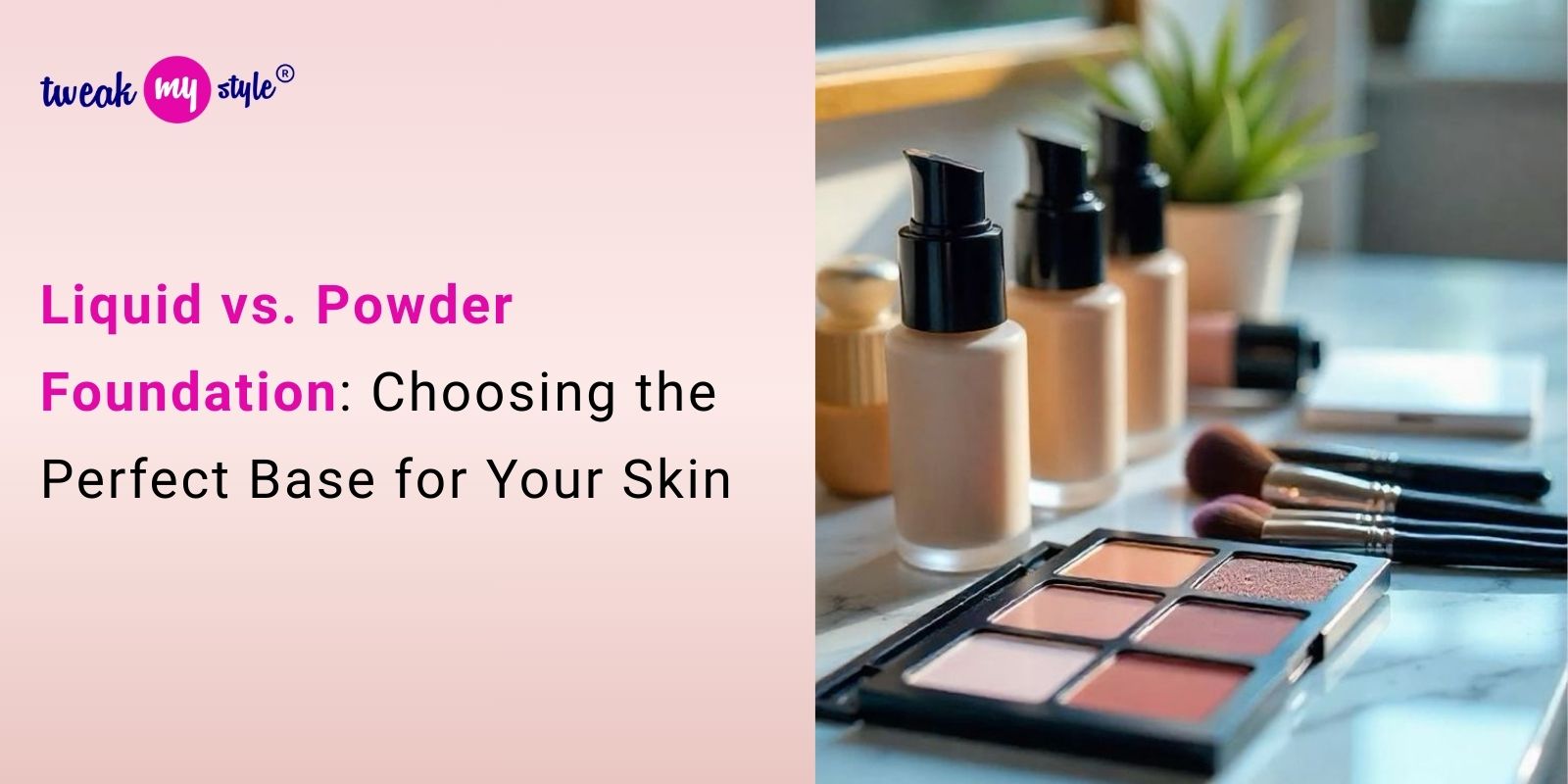Finding the right foundation is a cornerstone of a confident and polished look. But the world of foundations can feel overwhelming – there’s a dizzying array of formulas, finishes, and textures. And a significant decision you’ll face is the choice between liquid and powder foundation. While both aim to create a flawless complexion, they achieve this in very different ways, catering to vastly different skin types and preferences. This guide will break down the key differences, helping you understand which type of foundation is truly the perfect base for your skin.
Understanding the Fundamentals: What Do Liquid and Powder Foundations Actually Do?
Before diving into the specifics, let's quickly understand the core function of any foundation: to create an even tone and cover imperfections. Both liquid and powder foundations work by sitting on top of your skin, effectively creating a protective layer. However, they achieve this layer differently.
Liquid Foundation: Liquid foundations typically consist of pigments suspended in a liquid carrier, often with moisturizing ingredients. They provide coverage by dispersing these pigments across your skin, blurring imperfections and creating a smooth, even surface. The liquid base itself often adds hydration, contributing to a dewy or natural finish, depending on the specific formula.
Powder Foundation: Powder foundations, as the name suggests, are composed of finely milled pigments suspended in a powder. They work by coating the skin with a thin layer of powder, creating a matte finish. The powder physically sits on the skin, blotting away excess oils and minimizing shine.
Liquid Foundation: The Versatile Chameleon
Liquid foundations are arguably the most popular and versatile foundation type. Let’s examine why:
Coverage Options: Liquid foundations come in a massive range of coverage levels, from sheer (allowing your natural skin to shine through) to full (providing total coverage and concealing almost everything). This flexibility makes them suitable for a wide range of skin concerns and makeup looks.
Finish Varieties: The finish of a liquid foundation is another key differentiator. You'll find: Dewy Finish: These foundations are rich in hydrating ingredients and often contain oils, resulting in a luminous, radiant look. They’re fantastic for dry skin and those who crave a healthy glow. Natural Finish: These aim for a skin-like appearance, offering light to medium coverage and a subtle, satin finish. Silky Finish: These create a smooth, refined appearance, balancing between a natural and a slightly more polished look. Matte Finish: These are designed to control shine and provide a long-wearing, velvety finish.
Skin Type Suitability: Dry Skin: Dewy, hydrating liquid foundations are ideal for dry skin, adding moisture and preventing a cakey appearance. Look for formulas with hyaluronic acid, glycerin, or ceramides. Normal Skin: Most liquid foundations work well for normal skin, allowing you to experiment with different finishes and coverage levels. Oily Skin: While it might seem counterintuitive, lightweight liquid foundations with oil-controlling properties can work well for oily skin. Avoid overly hydrating formulas that can contribute to a greasy appearance. Combination Skin: A good quality, buildable liquid foundation with a satin or natural finish is generally a safe bet for combination skin, allowing you to target specific areas (like the T-zone) with targeted products.
- Application: Liquid foundations generally require a more precise application. You’ll typically need a foundation brush, a sponge (like a Beautyblender), or even your fingertips to blend the product evenly across your face.
Powder Foundation: The Control Master
Powder foundations have a long and storied history, and for good reason. They’re known for their effectiveness in controlling oil and creating a matte finish.
Coverage Options: Powder foundations traditionally offered lighter coverage than liquid foundations. While there are now higher-coverage powder formulas, they generally don’t rival the opacity of a full-coverage liquid.
Finish Variety: The primary finish of powder foundation is, unsurprisingly, matte. However, you'll find different levels of matte intensity. Velvet Matte: A finely milled powder for a truly smooth, matte finish. Matte Luxe: Offers a sophisticated, velvety matte effect.
Skin Type Suitability: Oily Skin: Powder foundations are exceptional for oily skin. They effectively absorb excess oil, control shine, and help prevent makeup from sliding off throughout the day. Combination Skin: Powder foundations are excellent for controlling oil in the T-zone, while you can use a hydrating moisturizer on drier areas of your face. Normal Skin: Powder foundations can be used to subtly mattify the skin and provide a polished look. Dry Skin: Generally, powder foundations are not recommended for dry skin, as they can exacerbate dryness and create a powdery, cakey appearance.
Application: Powder foundations are typically applied with a large, fluffy brush. A quick, sweeping motion is all it takes to distribute the powder across your face.
Making the Right Choice: Considering Your Skin and Lifestyle
Ultimately, the “best” foundation is the one that works best for you. Here’s a breakdown of factors to consider:
- Skin Type: As outlined above, liquid foundations generally cater to a wider range of skin types, while powder foundations excel on oily skin.
- Coverage Needs: Do you want a light, everyday look, or do you need full coverage to conceal blemishes and uneven skin tone?
- Lifestyle: If you lead an active lifestyle and need a foundation that can withstand sweating and movement, a long-wearing powder foundation might be a better choice.
- Personal Preference: Don’t underestimate the importance of how a foundation feels on your skin.















Share this post on: